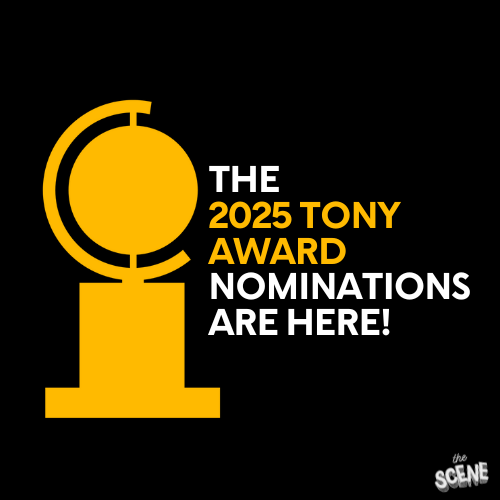by Zach Dulli, The Scene
It happens to every high school theatre teacher at some point. You’re deep into rehearsals, the production date looming ominously closer, and you’re stuck. Your actors, eager and talented as they are, keep bumping into the invisible wall of “just not getting it.” Maybe it’s Hamlet’s existential dread, the deep-seated regret in Death of a Salesman, or the complicated social satire lurking beneath the surface of The Importance of Being Earnest. You know it’s there, clear as day on the page, yet when your young actors take the stage, something critical is missing.
Blaming youth or inexperience might be the easiest route, after all, these are teenagers tackling material that can challenge seasoned professionals, but the truth usually lies in something simpler and far more fixable: communication. As a director, your real job isn’t telling actors what to feel; it’s showing them how to find it within themselves. This requires creativity, patience, and an understanding of how to translate complexities into realities that students genuinely recognize.
Take Hamlet. It’s easy to lose students amid the ornate Elizabethan language and labyrinthine philosophical musings. Hamlet’s existential dread can feel abstract at seventeen. But what if Hamlet’s hesitation wasn’t about princely indecision in a Danish castle? What if you reframed his famous paralysis, “To be or not to be,” in terms your students actually experience daily: the anxiety of endless choice, the paralysis of staring at an Instagram feed, frozen by the pressure of presenting the perfect version of themselves online. Suddenly, Hamlet isn’t a distant Danish prince; he’s that kid in third period who can’t decide between five different future plans, immobilized by the overwhelming options in front of him.
The trick to conveying complexity lies in grounding it. You can’t expect students to reach Shakespeare; you have to bring Shakespeare to them.
Consider, too, improvisation. The spontaneity of improv isn’t just fun, it’s deeply instructive. Suppose your script revolves around complicated human emotions like betrayal, love, jealousy, or loss. Design improved scenarios where students directly face these emotions in a low-stakes, safe environment. Let’s say betrayal is the core conflict. Have actors improvise a scene where one friend casually reveals another’s minor secret. Watch how quickly emotions shift, trust breaks down, and genuine hurt surfaces. Suddenly, when they return to scripted lines, that authenticity transfers; they’re no longer reciting; they’re reliving. Your audience will notice.
But it isn’t always about games. Sometimes, complexity requires quiet conversations. Invite your students into dialogue. Ask open-ended questions: “What do you think your character is fighting for?” or “Can you recall a time you felt similar confusion, grief, or rage?” When you shift from director to facilitator, trading dictation for dialogue, you empower your actors to discover emotional truths independently. And when they find those truths, they’ll defend them fiercely, embodying complexity in ways no amount of explicit instruction can achieve.
Equally crucial is creating an environment of honesty. It’s okay—essential even—to admit when things are hard. Telling your actors, plainly, “This scene is tough. It’s okay to struggle,” does more than reassure. It validates their process. Struggle is the birthplace of meaningful art. Students who see their struggles recognized rather than dismissed develop the resilience needed to dive deeper and push further. They’ll risk vulnerability because you’ve made it safe to fail. That courage translates directly onto the stage.
Physicality can also unlock emotional depth. Encourage actors to physically embody the struggles their characters face. If a scene demands desperation, have your actors speak their lines while physically pushing against a wall or holding a weighted object. The exertion isn’t just symbolic; it grounds emotion in tangible effort. Their words become urgent, their need undeniable. It’s not acting; it’s experiencing.
Another powerful tactic is leveraging modern parallels. Use the contemporary realities your students face, issues like peer pressure or social anxiety, as entry points to historical dramas or abstract texts. If you’re staging The Crucible, instead of getting bogged down in historical Puritanism, connect it to something they recognize, such as social media bullying, peer pressure, or rumors spreading through a school hallway. Suddenly, the stakes become clear, and the subtleties are anything but subtle.
Lastly, don’t forget about patience and trust. This isn’t something that happens overnight. Every actor’s journey is different, and every student will connect at their own pace. Your faith in their ability is often the most powerful catalyst. Encourage risk-taking, applaud small breakthroughs, and celebrate even minor victories. Eventually, they’ll arrive where you hoped they’d be, performing with depth, complexity, and genuine emotion.
The next time your actors aren’t quite “getting it,” remind yourself this isn’t an obstacle; it’s an opportunity. Complexity demands creativity, honesty, and vulnerability from both the actors and you, the director. When everyone is willing to meet halfway, the payoff can be more than great acting. It can be transformative, unforgettable theatre.









